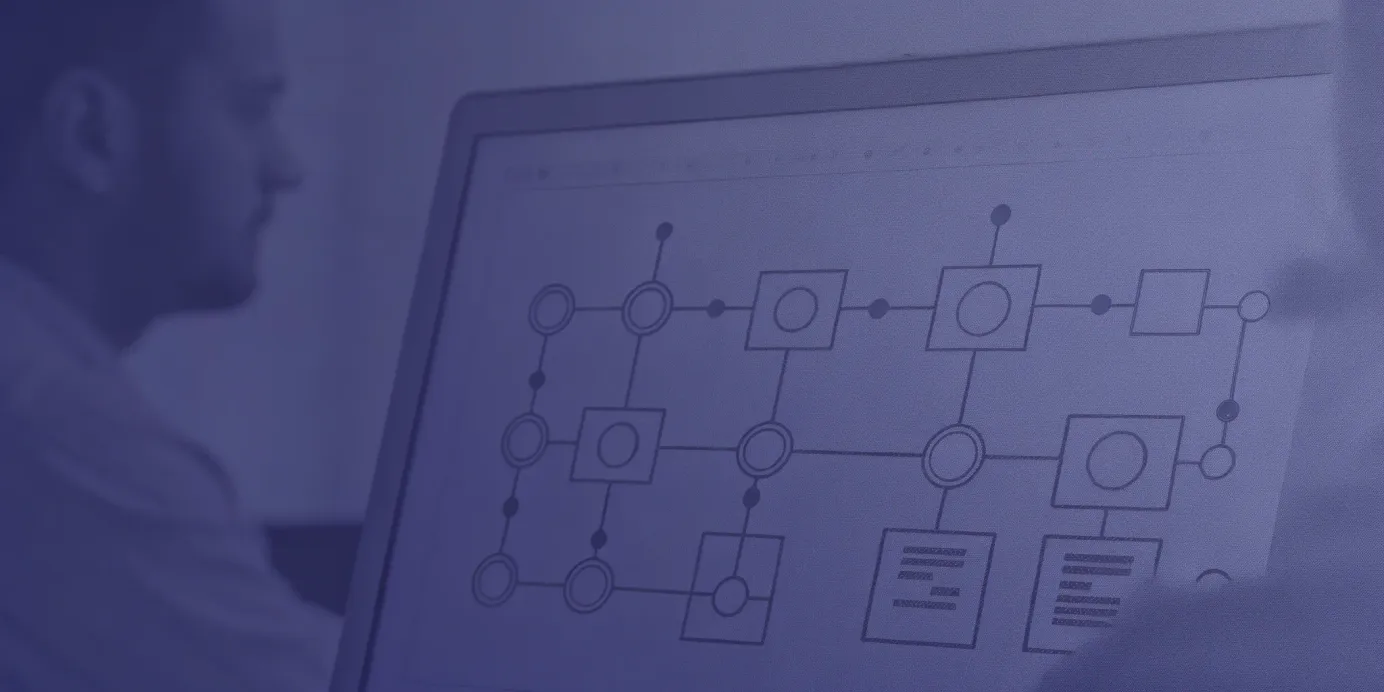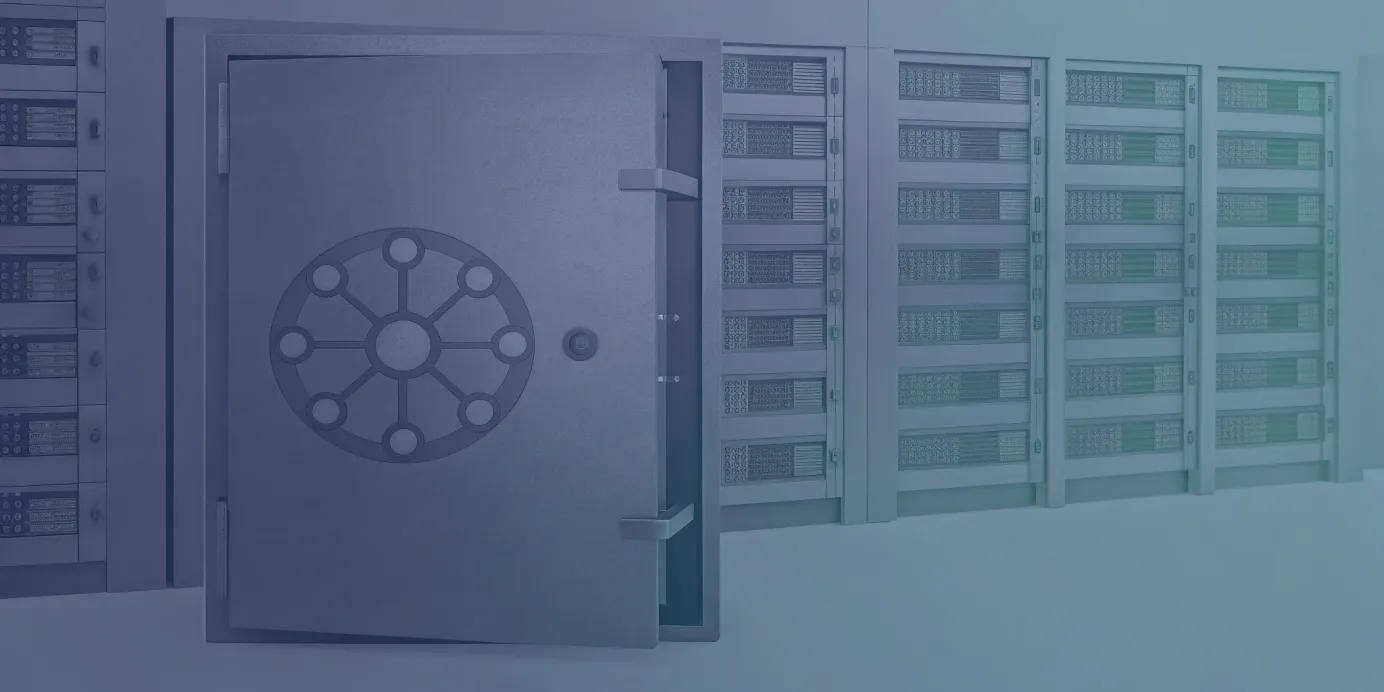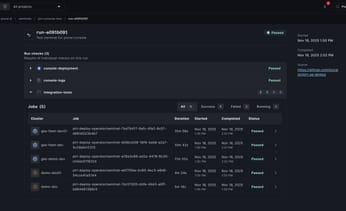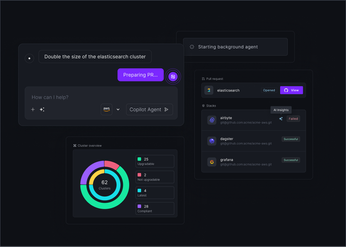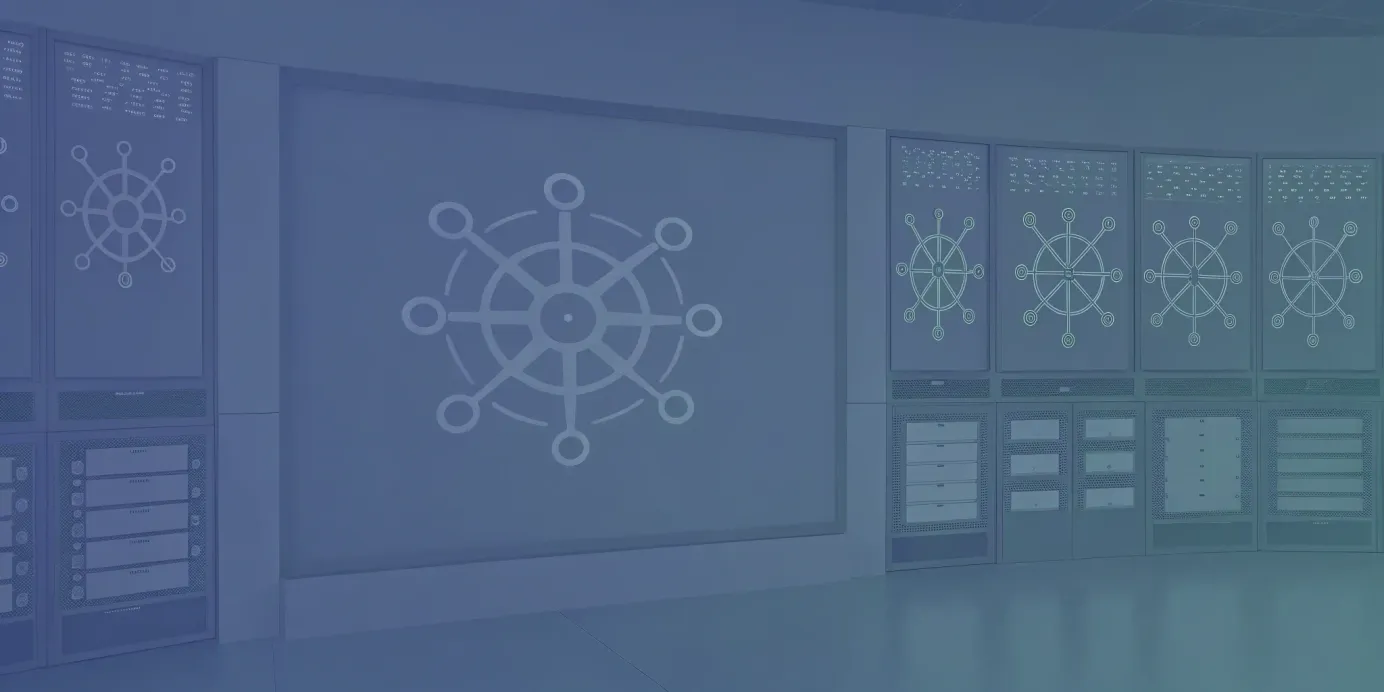
Your Guide to the Current Kubernetes Version
Stay updated with the current Kubernetes version to ensure security and efficiency. Learn about versioning, release cycles, and upgrade strategies.
For platform teams managing Kubernetes at scale, the real challenge isn’t knowing the latest version—it’s upgrading consistently and safely across clusters. With a new minor release every few months, the pace is relentless. Without a repeatable, automated process, upgrades turn into high-risk operations involving compatibility issues, dependency rewrites, and the looming threat of downtime. This kind of reactive approach doesn’t scale—it piles on technical debt and slows developer velocity. A proactive upgrade strategy, built on GitOps and automation, turns version bumps into predictable, low-effort maintenance—keeping your infrastructure secure, compliant, and ready for modern workloads.
Unified Cloud Orchestration for Kubernetes
Manage Kubernetes at scale through a single, enterprise-ready platform.
Key takeaways:
- Integrate upgrades into your workflow: Shift from reactive, emergency patching to a planned upgrade cycle. Aligning with the Kubernetes release schedule keeps your clusters within the support window and avoids the security risks of running EOL versions.
- Validate every upgrade with a pre-flight checklist: Mitigate risks by running a consistent set of pre-upgrade checks. This includes verifying toolchain compatibility, scanning for deprecated APIs, backing up
etcd, and running full test suites in a staging environment. - Use GitOps for consistent fleet-wide updates: Use a centralized platform like Plural to automate the upgrade process across all clusters. A GitOps-driven workflow ensures updates are repeatable, visible, and easy to roll back, eliminating manual errors and configuration drift.
What Is the Current Kubernetes Version?
Keeping your clusters current is essential for security, stability, and access to the latest features. Every new Kubernetes release includes critical patches, performance improvements, and API updates that modern tools depend on. But for platform teams managing many clusters, staying on top of the release cycle and upgrading without disruption is a major operational challenge.
Falling behind exposes your infrastructure to vulnerabilities, deprecated APIs, and limits your ability to adopt new tooling. A consistent, automated upgrade strategy starts with understanding how Kubernetes versioning works and which versions are officially supported.
The Latest Stable Release
The latest Kubernetes stable release should be your target for new clusters and your next upgrade. It reflects the most secure and feature-complete version available. Staying current ensures your workloads benefit from up-to-date security fixes and ecosystem compatibility.
You can always find the latest version and changelogs in the Kubernetes release notes. Reviewing them regularly helps your team plan for changes—especially deprecated APIs and new feature gates.
How Kubernetes Versioning Works
Kubernetes uses semantic versioning in the form x.y.z, where:
- x (Major): Rare, breaking API changes (e.g., v1 to v2).
- y (Minor): Released every 3–4 months. Introduces new features, often includes deprecations.
- z (Patch): Bug and security fixes for a minor version. Safe to apply quickly.
Understanding this structure helps you assess upgrade risk and plan rollout strategies across environments.
Supported Kubernetes Versions
Kubernetes officially supports the three most recent minor versions. For example, if the latest release is v1.30, then v1.30, v1.29, and v1.28 are within the support window. Older versions do not receive security patches or bug fixes, making them a liability in production.
Each supported version gets about 12 months of patch support. Staying within this window is non-negotiable for secure, reliable cluster operations—especially if you rely on modern CNCF tooling.
You can track EOL dates in the Kubernetes Release History.
What Is the Kubernetes Release Cycle?
Kubernetes evolves rapidly, with a release cycle designed to deliver innovation, stability, and security at a predictable pace. For platform teams running production workloads, understanding this cycle is critical—not just to access new features, but to avoid falling behind on security patches and compatibility.
Staying current isn’t as simple as running an upgrade command. It requires proactive planning, dependency validation, and cluster testing. Without a clear upgrade strategy, you risk getting stuck on outdated versions that require risky, multi-version jumps just to regain support.
Here’s what you need to know about how Kubernetes releases are structured—and how to stay ahead of them.
Release Cadence and Schedule
Kubernetes ships a new minor version roughly every four months, or three releases per year (e.g., v1.30, v1.31, etc.). Each release includes:
- New features and APIs
- Deprecations and removals
- Bug and security fixes
You can follow the Kubernetes Release Calendar for upcoming timelines. This regular cadence enables teams to align upgrades with sprint or quarterly planning.
For production teams, this rhythm creates a clear upgrade clock—and skipping it increases risk and operational complexity.
Kubernetes Support Windows
Kubernetes officially supports the three most recent minor releases at any given time. For example, if the current version is v1.30, then v1.28, v1.29, and v1.30 are supported.
Each version gets approximately 12 months of patch support, including:
- Security updates
- Critical bug fixes
- Backports of key features
Falling outside this window means no upstream support. That can leave you vulnerable to CVEs and ecosystem incompatibilities. Kubernetes also has a strict version skew policy—control plane and node components must stay within a supported range—so delaying upgrades affects the entire cluster lifecycle.
End-of-Life (EOL) and Managed Provider Timelines
Once a version reaches EOL, it stops receiving updates from the Kubernetes community. If you're self-managing, this means no more patches—you're responsible for securing the version yourself.
Managed Kubernetes platforms offer extended support:
- Amazon EKS provides 14 months of standard support for each version.
- Afterward, EKS may offer extended support (at a cost) to delay forced upgrades.
But extended support is not a long-term solution. It’s a stopgap. The most reliable and cost-effective path is to upgrade proactively—within the official support window.
Why It Matters
- Security: EOL clusters don’t receive CVE patches.
- Compatibility: New tools, CRDs, and APIs depend on recent Kubernetes versions.
- Developer Experience: Staying current reduces friction and technical debt.
In a world where Kubernetes is foundational infrastructure, the release cycle is your operations cycle. Build it into your roadmap.
What’s New in Kubernetes v1.33?
Kubernetes v1.33 is the latest version as of writing this article. It introduces key updates focused on resource flexibility, stronger isolation, and better developer ergonomics. For platform engineers and SREs, these features can reduce operational friction, improve workload availability, and strengthen security postures. Let’s look at the highlights.
In-Place Pod Resizing (Beta)
You can now modify a pod’s CPU and memory requests/limits without restarting it. This is especially useful for stateful apps or long-running jobs where restarts are expensive. It unlocks more responsive autoscaling and simplifies resource tuning in production.
Sleep Lifecycle Hook
A new Sleep action was added to container lifecycle hooks, allowing you to delay startup or shutdown for a specified duration. This gives you more precise control over pod sequencing—like ensuring a sidecar finishes booting before the main container starts. Ideal for tightly coupled, multi-container workloads.
Security Improvements
v1.33 expands security boundaries with updates to authentication, authorization, and Pod Security. These changes provide tighter defaults and more granular enforcement. If you're running a multi-tenant environment or exposed workloads, it’s worth reviewing your RBAC policies and adopting stricter controls.
Image Volumes (Beta)
You can now mount the contents of a container image as a volume, avoiding the need for init containers or ad-hoc scripts to preload config files or assets. This makes app deployments more declarative and reproducible, especially when sharing read-only data between containers.
User Namespace Support
User namespaces let pods map root inside the container to a non-root user on the host. This limits the blast radius of container breakouts and aligns with least privilege principles. While setup requires kernel support and proper configuration, it’s a major win for isolation and hard multi-tenancy.
How to Plan Your Kubernetes Upgrade
Upgrading Kubernetes isn’t just about running kubectl upgrade. It’s about preparation — minimizing downtime, avoiding regressions, and keeping clusters secure and maintainable. Treating upgrades as routine, rather than reactive fire drills, helps your team move faster and reduces long-term operational risk.
Here’s a practical, step-by-step framework for planning Kubernetes upgrades at scale.
1. Track the Support Window
Kubernetes only maintains the three most recent minor releases. Anything older no longer receives security patches or bug fixes. Check the Kubernetes Release Schedule to ensure your version is still supported.
If you're running an out-of-support version, upgrade as soon as possible. Aligning with upstream release cadence also helps you avoid last-minute scrambles before end-of-life deadlines.
2. Validate Compatibility Across the Stack
Upgrading the control plane is only one part of the picture. Ensure compatibility with:
- Your managed Kubernetes provider (e.g., Amazon EKS version support)
- Ingress controllers (e.g., NGINX, Traefik)
- Service meshes (e.g., Istio, Linkerd)
- Storage and CSI drivers
- Monitoring tools (e.g., Prometheus, Grafana agents)
Check the upgrade documentation or release notes for each component. Even one outdated dependency can cause post-upgrade failures.
3. Run Preflight Checks
Before upgrading, run pre-upgrade checks to avoid breaking changes:
- Detect deprecated APIs: Tools like
kubentandplutoscan manifests for removed or deprecated APIs. - Backup etcd: For self-managed clusters, always back up
etcd— the cluster’s key-value store. - Automate checks: Integrate these validations into CI/CD or GitOps pipelines to catch issues early.
4. Define and Execute a Testing Strategy
Never upgrade production blindly. Start by:
- Reviewing the Kubernetes Changelog for your target version.
- Upgrading a staging cluster that mirrors production.
- Running smoke tests, integration suites, and performance benchmarks to validate application behavior.
Tools like Plural or Argo CD can help apply the same manifests to multiple environments via GitOps, ensuring consistency.
How Plural Simplifies Kubernetes Updates
Upgrading Kubernetes clusters is critical for security and stability, but doing it manually across environments is slow, error-prone, and often inconsistent. Plural streamlines the entire process with automation, visibility, and centralized control—turning cluster upgrades into a predictable, low-risk routine.
Automate Updates with GitOps
Plural turns version upgrades into declarative Git workflows. Every change—including Kubernetes version bumps—is tracked in pull requests and deployed using GitOps. With Plural CD, you can define update strategies and roll them out across all your clusters in a consistent, automated fashion. No more one-off scripts or manual steps—just infrastructure updates treated like application code. Approve the PR, and Plural handles the rest.
Real-Time Upgrade Visibility
Upgrade failures usually come down to one thing: lack of visibility. Plural solves this with a unified dashboard that shows upgrade status, pod health, and logs across all your clusters. You get secure, direct access to live workloads—no kubeconfig wrangling or tunneling required. If something breaks, you'll see it immediately and know exactly where to look.
Safe Rollbacks, Powered by Git
When something goes wrong, fast rollback is non-negotiable. With Plural, rollbacks are as simple as reverting a commit. The GitOps agent automatically syncs your clusters back to the last known-good state, with no manual intervention. That means no firefighting, no guesswork—just reliable recovery in minutes.
Fleet-Wide Version Management
Managing versions across dozens of clusters is a constant headache. Plural gives you a centralized view of every cluster and its Kubernetes version. You can quickly identify out-of-date clusters, group them by environment or priority, and roll out upgrades in waves. This keeps your fleet consistent, secure, and compliant—without spreadsheets or custom scripts.
How to Maintain Kubernetes Security Across Versions
Security in Kubernetes isn’t a one-time task—it’s an ongoing discipline that evolves with every version. Each release may introduce new controls, but also new risks. The key to staying ahead of threats is a proactive, automated approach that treats security like any other operational concern: consistent, version-aware, and scalable.
Without structure, security turns reactive—patches get delayed, audits turn up surprises, and teams scramble to fix issues post-incident. With a mature process, security becomes embedded in your upgrade lifecycle, from vulnerability management to compliance enforcement.
Here’s how to make that shift:
Stay Ahead of CVEs
Security starts with knowing what’s vulnerable. CVEs are published constantly, and delays in mitigation can create major exposure. Every Kubernetes release addresses known flaws in core components—authentication, admission control, container runtime, etc.
Plural helps by automating CVE detection with tools like Trivy, deployed fleet-wide through a GitOps workflow. Vulnerability scanning becomes part of your cluster lifecycle, not an afterthought.
Patch Early, Not After the Incident
Kubernetes only supports a version for about a year. That means if you’re not upgrading regularly, you’re running software without security patches—no matter how stable it feels.
Plural makes patching routine. Updates are applied declaratively, tracked in Git, and rolled out safely across environments. No more risky catch-up cycles—just continuous hardening with minimal disruption.
Meet Compliance Without the Fire Drill
Frameworks like FedRAMP, HIPAA, and PCI DSS require that your software is patched, supported, and properly configured. Auditors will check your Kubernetes version and whether your clusters follow security benchmarks.
With Plural, version upgrades and compliance tooling are tied together. Supported versions? Check. Policy enforcement via Gatekeeper? Check. Git-tracked audit logs? Check.
Automate Enforcement at Scale
Manually managing security across clusters doesn’t scale. Plural centralizes security controls so you can define once and apply everywhere. Whether it’s RBAC hardening, pod security, or runtime scanning, everything flows through GitOps—consistent, traceable, and automated.
You get strong guardrails without micromanaging each cluster, freeing your team to ship faster while staying secure.
How to Prepare for Future Kubernetes Releases
Staying ahead of Kubernetes releases is more than just tracking version numbers—it's about building a repeatable process that makes upgrades routine instead of reactive. Each new release brings enhancements, but also potential API deprecations, configuration changes, and new operational patterns. A well-prepared platform team can turn this into a strategic advantage.
The first step is visibility. You need a centralized view of your fleet to identify which clusters are lagging, what workloads rely on soon-to-be-deprecated APIs, and where changes might break things. Tools like Plural simplify this with a single control plane for managing upgrades, testing in isolated environments, and automating rollouts.
Know What’s Coming
The Kubernetes release schedule is consistent—new minor versions ship about every four months—and the community regularly shares upcoming changes via blog posts and release notes. These often flag deprecations early, giving you time to prepare. Reading these should be part of your team’s regular process.
For example, if an upcoming release has no major deprecations, you can focus on validating new features. If a critical API is being removed, you’ll know to start updating manifests or Helm charts early.
Track and Resolve Deprecations
One of the most common upgrade blockers is reliance on deprecated APIs. Instead of discovering this during an upgrade, proactively audit your manifests each release cycle. A GitOps workflow helps here—tools like Pluto can detect deprecated resources across your repos. Combined with a centralized platform, you can enforce consistent upgrades across environments.
Build a Real Upgrade Strategy
Ad hoc upgrades don’t scale. Define a clear policy: how often you upgrade, how you test, and how you roll back. Automate this as much as possible. Platforms like Plural let you run upgrades across clusters with scheduled windows, rollback safety, and minimal downtime. This frees engineers to focus on shipping features, not maintaining infrastructure.
Key Resources for Kubernetes Version Management
Managing Kubernetes versions effectively requires more than just reading release notes. It’s about combining the right documentation, tooling, and workflows to keep clusters secure, stable, and up-to-date. For platform teams, this means planning proactively, testing thoroughly, and rolling out updates safely—across many clusters.
Below are key resources and tools that enable a repeatable, low-risk upgrade strategy.
Official Kubernetes Documentation
Start here. The official Kubernetes docs are the authoritative source for:
- Version support policy: Only the three most recent minor releases are supported.
- Changelogs
- Deprecations and removals
Before any upgrade, review the release notes for the target version to understand API changes, feature flags, and behavioral differences that could impact your workloads.
Monitoring & Alerting
Upgrades often introduce subtle regressions or shifts in behavior. Robust observability helps you:
- Establish performance baselines
- Detect post-upgrade anomalies
- Validate service reliability across versions
Tools like Prometheus, Grafana, and Loki are popular for metrics, dashboards, and logs. For multi-cluster fleets, Plural provides a built-in Kubernetes dashboard that consolidates visibility across versions in a single pane.
Security & Compliance
Every new Kubernetes release includes critical security patches and new controls. Staying current isn’t optional—it’s a security requirement. To ensure your clusters remain compliant:
- Use tools like Trivy to scan for CVEs
- Enforce policies with OPA Gatekeeper
- Automate security checks in CI/CD pipelines
Plural integrates these tools to streamline policy enforcement and vulnerability scanning across clusters.
Configuration Management
With each upgrade, you’ll likely need to modify manifests to address deprecated APIs or leverage new features. Tools like Helm (templating), Kustomize and Terraform (infra as code) help you track these changes as version-controlled code. Platforms like Plural layer GitOps workflows on top of these tools via Plural Stacks, enabling consistent, automated config rollouts across environments.
Related Articles
- Managing Kubernetes Deployments: A Comprehensive Guide
- Deploy to Kubernetes: The Ultimate 2024 Guide
- Kubernetes Cluster Upgrade Cycles: A Practical Guide
- Kubernetes Cluster Security: A Deep Dive
- Kubernetes Deprecated API: A Practical Guide to Migration
Unified Cloud Orchestration for Kubernetes
Manage Kubernetes at scale through a single, enterprise-ready platform.
Frequently Asked Questions
Why can't I just stick with an older Kubernetes version that works for me? While it might seem safer to stay on a version you know is stable, it introduces significant long-term risks. The Kubernetes community only provides security patches for the three most recent minor versions. Once your version falls out of that support window, it no longer receives updates for newly discovered vulnerabilities, leaving your clusters exposed. Furthermore, you miss out on performance improvements, bug fixes, and new features that modern tools and applications often depend on, which can lead to compatibility issues and technical debt down the road.
What's the biggest risk when upgrading Kubernetes, and how can I mitigate it? The most common and disruptive risk during an upgrade is depending on a deprecated API that has been removed in the new version. When this happens, your deployments can fail because the cluster no longer understands the manifest definitions. The best way to mitigate this is to be proactive. Before any upgrade, use tools to scan your manifests for outdated API versions. More importantly, always perform the upgrade in a staging environment that closely mirrors production. This allows you to catch and fix any breaking changes without impacting your users.
My team manages dozens of clusters. How does a tool like Plural make multi-cluster upgrades less painful? Managing upgrades across a large fleet highlights the weaknesses of manual processes. Plural addresses this by providing a central control plane for your entire environment. Instead of updating each cluster individually, you can use a GitOps workflow to define your target version and roll it out consistently everywhere. This ensures every cluster is configured identically, reducing errors. The unified dashboard gives you real-time visibility into the upgrade progress across the fleet, and if anything goes wrong, you can revert the change in Git to execute a safe, immediate rollback.
How does upgrading Kubernetes versions relate to security compliance? Maintaining security compliance with standards like FedRAMP, HIPAA, or PCI DSS is directly tied to running supported software. These frameworks mandate that you protect your systems from known vulnerabilities, which requires applying security patches in a timely manner. Running an end-of-life (EOL) Kubernetes version is an automatic compliance failure because it no longer receives security updates from the community. A consistent upgrade strategy is therefore a foundational requirement for passing audits and ensuring your environment meets regulatory standards.
The Kubernetes release cycle seems fast. How can a small platform team possibly keep up? The key is to shift from treating upgrades as large, infrequent emergencies to small, routine maintenance tasks. Instead of scrambling when a version is about to reach its end-of-life, build a predictable upgrade cadence into your team's schedule. This is only feasible with automation. By using a platform like Plural to manage the process through GitOps, you eliminate most of the manual work. This allows a small team to manage a large fleet efficiently because the process for upgrading one cluster is the same as upgrading a hundred, turning a daunting task into a manageable, repeatable workflow.
Newsletter
Join the newsletter to receive the latest updates in your inbox.


